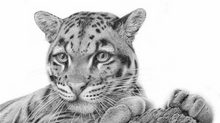Travelling the Kalahari’s red roads
- Jon Isaacs
- Aug 4, 2022
- 4 min read
Updated: Jan 13, 2023
As our small plane banked steeply to line up with the Tswalu landing strip I marvelled that we had finally made it. The trip to the Green Kalahari had been planned for 2019. Since then, thanks to the pandemic, it had been postponed twice. I really didn’t think we’d ever get back to our beloved Africa, especially as we knew that advancing years were beginning to catch up on us. Yet, here we were, after twenty-four hours of travel carrying jab passports, temperature checks and all the other paraphernalia linked to the pandemic, dropping to gently land on the tarmac.
We had been here ten years before. I wondered what had changed, what I’d remember and what would excite or disappoint. As we landed I’d noticed that the mountains seemed larger and more dominant. For miles the camel thorn bushes still predominated but what had happened to the corn coloured, fine grasses which had previously struggled to poke through the red sandy soil? Apparently, for the last two years, this area of the Kalahari had been blessed with way above average rainfall. Consequently, the grass was often still green, thick and tall. This was great for the wildlife but exactly how were we to find small mammals like the pangolin when they had this huge, lush expanse to hide in?

Within minutes of landing we were out in the jeeps looking for our first African creatures. As before, we travelled the red, sandy roads. The Tswalu reserve is huge, owned by the Oppenheimers who plough large sums of money into recreating the original bush and eco system which existed before the farmers had moved in a couple of centuries before. Whilst one is allowed, within limitations, to drive off-piste, most of the travel is conducted along the series of roads which traverse and bisect the land. To ensure the roads remain serviceable, there is a gang who have heavy machinery which can construct and repair as necessary. Roads which are heavily used and compacted can be tilled so that they remain permeable to water. Sections where water tends to congregate, such as on bends, have ridges built into them which channel the water off to the side. Even plants like the camel thorn have occasionally to be dealt with, as like acacia in Kenya, nobody wants thorns raking across their face or limbs as they travel in an open top or sided vehicle.

Roads may seem an unimportant item when discussing what makes a successful safari. Yet, in the Kalahari they can make or break a holiday. Each jeep has its own tracker and guide at Tswalu and they are the main reason guests get to see some incredible sightings. Our trackers had been brought up in the area. They knew the behaviour of certain species and individuals and had an intimate knowledge linked to superb tracking skills developed literally since birth. With the dense grass it was almost impossible to track creatures, but if the creatures had crossed or walked up roads the guides could gradually home in on where the creature might be. It took our tracker and guide four hours of slowly quartering along roads, investigating water holes, and patches of sand, often deep in conversation about what the tracks were indicating before we found the two cheetah brothers lying out under a bush. On another occasion, a few White rhino tracks moving away from the road led us to a family group of five, well hidden in a camel thorn thicket.

During our safari we experienced extreme weather over thirty-six hours of thunderstorms, high wind and even hail. So much for climate warming being a myth! After the storms finally passed we again could use the red roads. Tracks were even clearer as the sand was so wet and helped the trackers to establish time frames for when animals had passed. The animals themselves use the roads as it’s an easy way of moving from place to place. We saw a lion pride using a road to amble down to a water hole and the cheetah brothers swiftly moving along one to get ahead of wildebeest they were stalking. A yellow mongoose was observed digging the road up to discover tasty grubs and our only sighting of an aardvark was spotted as it hurtled across the road in front of us. Even a porcupine obliged by reversing at us whilst holding a central position on a road we were travelling. The birds meanwhile use the roads for dust baths where they can keep a lookout for danger or, if a heavier bird like a Kori bustard, as a suitable runway to take off from. However, I never have worked out why guinea fowl, who frequently walk down roads, break into a trot, then sprint, flap and panic, when a jeep comes up behind them. They just keep running along the road rather than just turning off it sideways and watching us drive past!
The final huge advantage of travelling the roads is that they allow one to take photos without grass covering half the animal including the eyes or face. I’ve taken several thousand photos on this trip and it’s frustrating how many have been spoilt by single, rogue stalks of the dreaded Kalahari grass! Invariably, the best shots have come from creatures in the vicinity of, or on, the red roads. I therefore sincerely hope I’ll be able to travel them to my advantage at least one more time.














































Comments